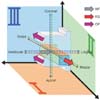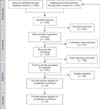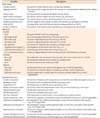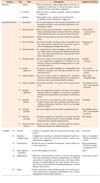1. Besançon RM. The encyclopedia of physics. 3rd ed. New York, NY: Van Nostrand Reinhold Company;1985.
2. Jastrzebsky ZD. The nature and properties of engineering materials. 2nd ed. New York, NY: Wiley & Sons;1976.
3. Kusy RP, Whitley JQ. Influence of archwire and bracket dimensions on sliding mechanics: derivations and determinations of the critical contact angles for binding. Eur J Orthod. 1999; 21:199–208.

4. Kusy RP, Whitley JQ. Friction between different wire-bracket configurations and materials. Semin Orthod. 1997; 3:166–177.
5. Burrow SJ. Friction and resistance to sliding in orthodontics: a critical review. Am J Orthod Dentofacial Orthop. 2009; 135:442–447.

6. Kapur R, Sinha PK, Nanda RS. Comparison of frictional resistance in titanium and stainless steel brackets. Am J Orthod Dentofacial Orthop. 1999; 116:271–274.

7. Southard TE, Marshall SD, Grosland NM. Friction does not increase anchorage loading. Am J Orthod Dentofacial Orthop. 2007; 131:412–414.

8. Braun S, Bluestein M, Moore BK, Benson G. Friction in perspective. Am J Orthod Dentofacial Orthop. 1999; 115:619–627.

9. Yeh CL, Kusnoto B, Viana G, Evans CA, Drummond JL. In vitro evaluation of frictional resistance between brackets with passive-ligation designs. Am J Orthod Dentofacial Orthop. 2007; 131:704.e11–704.e22.
10. Muguruma T, Iijima M, Brantley WA, Ahluwalia KS, Kohda N, Mizoguchi I. Effects of third-order torque on frictional force of self-ligating brackets. Angle Orthod. 2014; 84:1054–1061.

11. Kusy RP. Influence of force systems on archwire-bracket combinations. Am J Orthod Dentofacial Orthop. 2005; 127:333–342.

12. Edwards GD, Davies EH, Jones SP. The ex vivo effect of ligation technique on the static frictional resistance of stainless steel brackets and archwires. Br J Orthod. 1995; 22:145–153.

13. Suwa N, Watari F, Yamagata S, Iida J, Kobayashi M. Static-dynamic friction transition of FRP esthetic orthodontic wires on various brackets by suspension-type friction test. J Biomed Mater Res B Appl Biomater. 2003; 67:765–771.

14. Kusy RP, Whitley JQ, Prewitt MJ. Comparison of the frictional coefficients for selected archwire-bracket slot combinations in the dry and wet states. Angle Orthod. 1991; 61:293–302.
15. Tageldin H, Cadenas de Llano Pérula M, Thevissen P, Celis JP, Willems G. Resistance to sliding in orthodontics: a systematic review. Jacobs J Dent Res. 2016; 3:034.
16. Leite VV, Lopes MB, Gonini Júnior A, Almeida MR, Moura SK, Almeida RR. Comparison of frictional resistance between self-ligating and conventional brackets tied with elastomeric and metal ligature in orthodontic archwires. Dental Press J Orthod. 2014; 19:114–119.

17. Fleming PS, DiBiase AT, Lee RT. Randomized clinical trial of orthodontic treatment efficiency with self-ligating and conventional fixed orthodontic appliances. Am J Orthod Dentofacial Orthop. 2010; 137:738–742.

18. Savoldi F, Bonetti S, Dalessandri D, Mandelli G, Paganelli C. Incisal apical root resorption evaluation after low-friction orthodontic treatment using two-dimensional radiographic imaging and trigonometric correction. J Clin Diagn Res. 2015; 9:ZC70–ZC74.

19. Saunders CR, Kusy RP. Surface topography and frictional characteristics of ceramic brackets. Am J Orthod Dentofacial Orthop. 1994; 106:76–87.

20. Peterson L, Spencer R, Andreasen G. A comparison of friction resistance for Nitinol and stainless steel wire in edgewise brackets. Quintessence Int Dent Dig. 1982; 13:563–571.
21. Husain N, Kumar A. Frictional resistance between orthodontic brackets and archwire: an in vitro study. J Contemp Dent Pract. 2011; 12:91–99.

22. Kim TK, Kim KD, Baek SH. Comparison of frictional forces during the initial leveling stage in various combinations of self-ligating brackets and archwires with a custom-designed typodont system. Am J Orthod Dentofacial Orthop. 2008; 133:187.e15–187.e24.

23. Oz AA, Arici N, Arici S. The clinical and laboratory effects of bracket type during canine distalization with sliding mechanics. Angle Orthod. 2012; 82:326–332.

24. Huang TH, Luk HS, Hsu YC, Kao CT. An in vitro comparison of the frictional forces between archwires and self-ligating brackets of passive and active types. Eur J Orthod. 2012; 34:625–632.

25. Lombardo L, Wierusz W, Toscano D, Lapenta R, Kaplan A, Siciliani G. Frictional resistance exerted by different lingual and labial brackets: an in vitro study. Prog Orthod. 2013; 14:37.

26. Williams CL, Khalaf K. Frictional resistance of three types of ceramic brackets. J Oral Maxillofac Res. 2014; 4:e3.

27. Amaral MR, Neto PS, Pithon MM, Oliveira DD. Evaluation in vitro of frictional resistance of self-ligating esthetic and conventional brackets. Int J Odontostomatol. 2014; 8:261–266.

28. Pasha A, Vishwakarma S, Narayan A, Vinay K, Shetty SV, Roy PP. Comparison of frictional forces generated by a new ceramic bracket with the conventional brackets using unconventional and conventional ligation system and the self-ligating brackets: an in vitro study. J Int Oral Health. 2015; 7:108–113.
29. Arici N, Akdeniz BS, Arici S. Comparison of the frictional characteristics of aesthetic orthodontic brackets measured using a modified in vitro technique. Korean J Orthod. 2015; 45:29–37.

30. Gandini P, Orsi L, Bertoncini C, Massironi S, Franchi L. In vitro frictional forces generated by three different ligation methods. Angle Orthod. 2008; 78:917–921.

31. Kim Y, Cha JY, Hwang CJ, Yu HS, Tahk SG. Comparison of frictional forces between aesthetic orthodontic coated wires and self-ligation brackets. Korean J Orthod. 2014; 44:157–167.

32. Reznikov N, Har-Zion G, Barkana I, Abed Y, Redlich M. Measurement of friction forces between stainless steel wires and “reduced-friction” self-ligating brackets. Am J Orthod Dentofacial Orthop. 2010; 138:330–338.

33. Ozturk Ortan Y, Yurdakuloglu Arslan T, Aydemir B. A comparative in vitro study of frictional resistance between lingual brackets and stainless steel archwires. Eur J Orthod. 2012; 34:119–125.

34. Regis S Jr, Soares P, Camargo ES, Guariza Filho O, Tanaka O, Maruo H. Biodegradation of orthodontic metallic brackets and associated implications for friction. Am J Orthod Dentofacial Orthop. 2011; 140:501–509.

35. Budd S, Daskalogiannakis J, Tompson BD. A study of the frictional characteristics of four commercially available self-ligating bracket systems. Eur J Orthod. 2008; 30:645–653.

36. Fourie Z, Ozcan M, Sandham A. Effect of dental arch convexity and type of archwire on frictional forces. Am J Orthod Dentofacial Orthop. 2009; 136:14.e1–14.e7. discussion 14-5.

37. Edwards IR, Spary DJ, Rock WP. The effect upon friction of the degradation of orthodontic elastomeric modules. Eur J Orthod. 2012; 34:618–624.

38. Martins MM, Teixeira AOB, Artese F, Mendes AM. Friction generated by elastomeric ligature with and without polymer coating. Braz Dent Sci. 2011; 14:9–12.

39. Queiroz GV, Ballester RY, Batista De Paiva J, Neto JR, Galon GM. Comparative study of frictional forces generated by NiTi archwire deformation in different orthodontic brackets in vitro evaluation. Dental Press J Orthod. 2012; 17:45–50.

40. Abbassy MA, Bakry AS. The effect of fluoride on beta titanium orthodontics wires' surface texture and friction resistance. Int J Dent Oral Sci. 2015; 2:47–52.
41. Uribe MN, Chaparro JPB, Cáceres EJG, Mazo ILP, Quijada ACR. Comparison of resistance to sliding produced by self-ligating brackets and conventional brackets ligated with conventional elastomeric ligature and low-friction ligatures. Rev Fac Odontol Univ Antioq. 2012; 23:192–206.
42. Pillai AR, Gangadharan A, Kumar S, Shah A. Comparison of the frictional resistance between archwire and different bracket system: an in vitro study. J Pharm Bioallied Sci. 2014; 6:Suppl 1. S150–S155.

43. Kumar S, Singh S, Hamsa PRR, Ahmed S, Prasanthma , Bhatnagar A, et al. Evaluation of friction in orthodontics using various brackets and archwire combinations-an in vitro study. J Clin Diagn Res. 2014; 8:ZC33–ZC36.
44. Fathimani M, Melenka GW, Romanyk DL, Toogood RW, Heo G, Carey JP, et al. Development of a standardized testing system for orthodontic sliding mechanics. Prog Orthod. 2015; 16:14.

45. Voudouris JC, Schismenos C, Lackovic K, Kuftinec MM. Self-ligation esthetic brackets with low frictional resistance. Angle Orthod. 2010; 80:188–194.

46. Nucera R, Lo Giudice A, Matarese G, Artemisia A, Bramanti E, Crupi P, et al. Analysis of the characteristics of slot design affecting resistance to sliding during active archwire configurations. Prog Orthod. 2013; 14:35.

47. Farronato G, Maijer R, Caria MP, Esposito L, Alberzoni D, Cacciatore G. The effect of Teflon coating on the resistance to sliding of orthodontic archwires. Eur J Orthod. 2012; 34:410–417.

48. Alió-Sanz JJ, Claros-Stucchi M, Albaladejo A, Iglesias-Conde C, Alvarado-Lorenzo A. In vitro comparative study on the friction of stainless steel wires with and without Orthospeed® (JAL 90458) on an inclined plane. J Clin Exp Dent. 2016; 8:e141–e145.

49. Whitley JQ, Kusy RP. Influence of interbracket distances on the resistance to sliding of orthodontic appliances. Am J Orthod Dentofacial Orthop. 2007; 132:360–372.

50. Tecco S, Di Iorio D, Cordasco G, Verrocchi I, Festa F. An in vitro investigation of the influence of self-ligating brackets, low friction ligatures, and archwire on frictional resistance. Eur J Orthod. 2007; 29:390–397.

51. Pliska BT, Beyer JP, Larson BE. A comparison of resistance to sliding of self-ligating brackets under an increasing applied moment. Angle Orthod. 2011; 81:794–799.

52. Tecco S, Di Iorio D, Nucera R, Di Bisceglie B, Cordasco G, Festa F. Evaluation of the friction of self-ligating and conventional bracket systems. Eur J Dent. 2011; 5:310–317.

53. Crincoli V, Perillo L, Di Bisceglie MB, Balsamo A, Serpico V, Chiatante F, et al. Friction forces during sliding of various brackets for malaligned teeth: an in vitro study. ScientificWorldJournal. 2013; 2013:871423.

54. de Lima Mendonça S, Praxedes Neto OJ, de Oliveira PT, dos Santos PB, de Sá Leitão Pinheiro FH. Comparison of friction produced by two types of orthodontic bracket protectors. Dental Press J Orthod. 2014; 19:86–91.

55. Chang CJ, Lee TM, Liu JK. Effect of bracket bevel design and oral environmental factors on frictional resistance. Angle Orthod. 2013; 83:956–965.

56. Galvão MB, Camporesi M, Tortamano A, Dominguez GC, Defraia E. Frictional resistance in monocrystalline ceramic brackets with conventional and nonconventional elastomeric ligatures. Prog Orthod. 2013; 14:9.

57. Inami T, Tanimoto Y, Yamaguchi M, Shibata Y, Nishiyama N, Kasai K. Surface topography, hardness, and frictional properties of GFRP for esthetic orthodontic wires. J Biomed Mater Res B Appl Biomater. 2016; 104:88–95.

58. Ioi H, Yanase Y, Uehara M, Hara A, Nakata S, Nakasima A, et al. Frictional resistance in plastic preadjusted brackets ligated with low-friction and conventional elastomeric ligatures. J Orthod. 2009; 36:17–22. discussion 13.

59. Matarese G, Nucera R, Militi A, Mazza M, Portelli M, Festa F, et al. Evaluation of frictional forces during dental alignment: an experimental model with 3 nonleveled brackets. Am J Orthod Dentofacial Orthop. 2008; 133:708–715.

60. Cordasco G, Lo Giudice A, Militi A, Nucera R, Triolo G, Matarese G. In vitro evaluation of resistance to sliding in self-ligating and conventional bracket systems during dental alignment. Korean J Orthod. 2012; 42:218–224.

61. Chung M, Nikolai RJ, Kim KB, Oliver DR. Third-order torque and self-ligating orthodontic bracket-type effects on sliding friction. Angle Orthod. 2009; 79:551–557.

62. Heo W, Baek SH. Friction properties according to vertical and horizontal tooth displacement and bracket type during initial leveling and alignment. Angle Orthod. 2011; 81:653–661.

63. Meier MJ, Bourauel C, Roehlike J, Reimann S, Keilig L, Braumann B. Friction behavior and other material properties of nickel-titanium and titanium-molybdenum archwires following electrochemical surface refinement. J Orofac Orthop. 2014; 75:308–318.

64. Murayama M, Namura Y, Tamura T, Iwai H, Shimizu N. Relationship between friction force and orthodontic force at the leveling stage using a coated wire. J Appl Oral Sci. 2013; 21:554–559.

65. Seo YJ, Lim BS, Park YG, Yang IH, Ahn SJ, Kim TW, et al. Effect of tooth displacement and vibration on frictional force and stick-slip phenomenon in conventional brackets: a preliminary in vitro mechanical analysis. Eur J Orthod. 2015; 37:158–163.

66. Obaisi NA, Galang-Boquiren MT, Evans CA, Tsay TG, Viana G, Berzins D, et al. Comparison of the transformation temperatures of heat-activated nickel-titanium orthodontic archwires by two different techniques. Dent Mater. 2016; 32:879–888.

67. Savoldi F, Visconti L, Dalessandri D, Bonetti S, Tsoi JKH, Matinlinna JP, et al. In vitro evaluation of the influence of velocity on sliding resistance of stainless steel arch wires in a self-ligating orthodontic bracket. Orthod Craniofac Res. 2017; 20:119–125.

68. Natt AS, Sekhon AK, Munjal S, Duggal R, Holla A, Gupta P, et al. A comparative evaluation of static frictional resistance using various methods of ligation at different time intervals: an in vitro study. Int J Dent. 2015; 2015:407361.

69. Venâncio FR, Vedovello SAS, Tubel CAM, Degan VV, Lucato AS, Lealdim LN. Effect of elastomeric ligatures on frictional forces between the archwire and orthodontic bracket. Braz J Oral Sci. 2013; 12:41–45.
70. Pacheco MR, Oliveira DD, Neto PS, Jansen WC. Evaluation of friction in self-ligating brackets subjected to sliding mechanics: an in vitro study. Dental Press J Orthod. 2011; 16:107–115.
71. Cordasco G, Farronato G, Festa F, Nucera R, Parazzoli E, Grossi GB. In vitro evaluation of the frictional forces between brackets and archwire with three passive self-ligating brackets. Eur J Orthod. 2009; 31:643–646.

72. Doshi UH, Bhad-Patil WA. Static frictional force and surface roughness of various bracket and wire combinations. Am J Orthod Dentofacial Orthop. 2011; 139:74–79.

73. Sirisaowaluk N, Kravchuk O, Ho CT. The influence of ligation on frictional resistance to sliding during repeated displacement. Aust Orthod J. 2006; 22:141–146.
74. Keith O, Jones SP, Davies EH. The influence of bracket material, ligation force and wear on frictional resistance of orthodontic brackets. Br J Orthod. 1993; 20:109–115.








 PDF
PDF ePub
ePub Citation
Citation Print
Print







 XML Download
XML Download